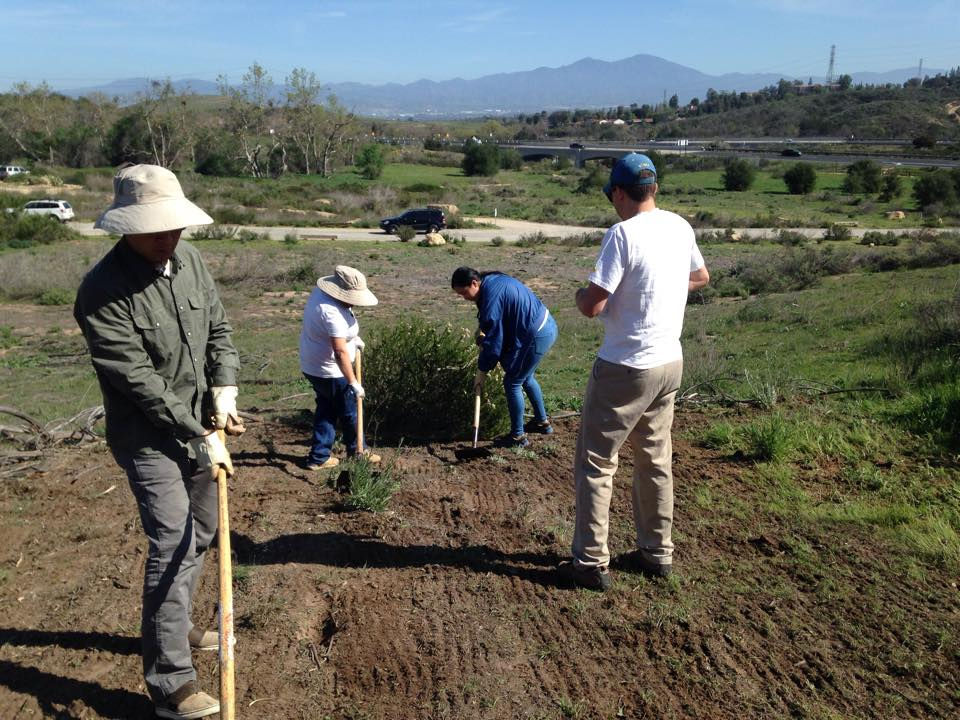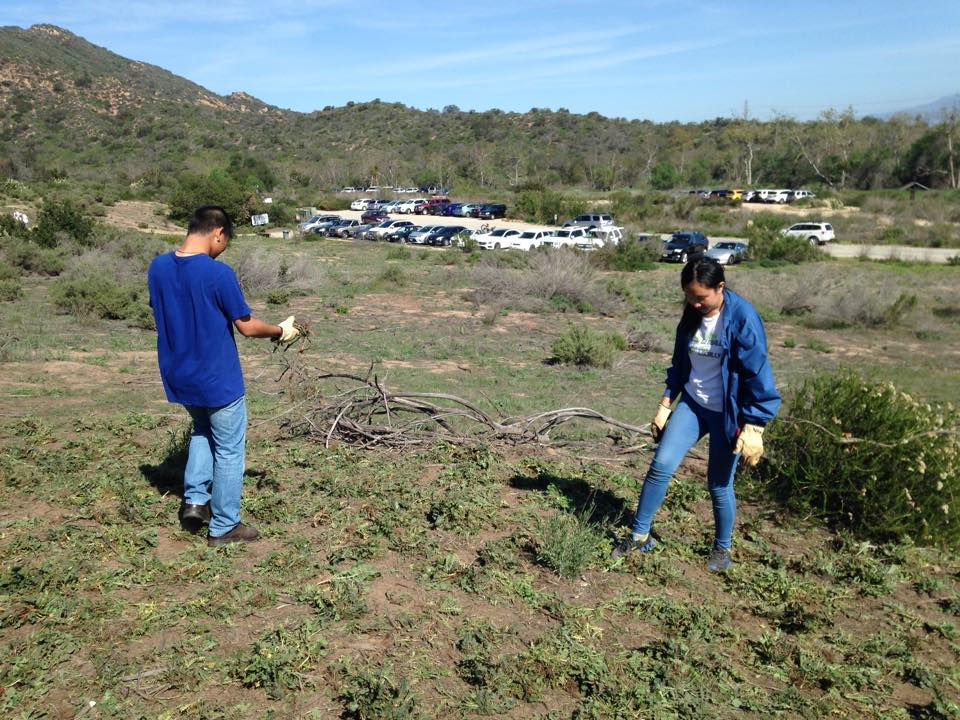Keep It Wild Volunteer Day - Laguna Coast Wilderness Park
- Ling Hu
- Mar 11, 2016
- 3 min read

Photo Courtesy of: Ling Hu
It was 8:00 in the morning on February 20th, around 40 people including some families with their children, and a group of students from UCI Global Environmental Bridage and Calvary Chapel middle school Builder club gathered at Nix Nature Center at Laguna Coast Wilderness Park, picking up their weeding tools for removing non-native plants and planting native plants.
The event was sponsored by the Laguna Canyon Foundation, a nonprofit organization founded in 1989 dedicated to preserving and protecting the 20,000-acre area in South Coast Wilderness including Laguna Coast, Aliso and Wood Canyons Wilderness Parks, Crystal Cove State Park, and the City of Irvine Open Space Preserve. Laguna Beach voters passed the passage of the twenty million dollar bond measure to protect the restoration.
Before they started, restoration coordinator, Matthew Sutton, gave the volunteers instruction on the proper way to remove the invasive plant, Tocalote. Tocalote has winged stems that are grayish to green in color, and it can grow to one to two feet high. Sutton kneeld down on the ground with his hands holding a Tocalote’s stem. “We try not to disturb the land, so use the puller to loosen the soil around it. And, pull the central root out.Then, the whole plant will be easily removed” said Matthew Sutton. He patted the soil back to the hole after pulling out the Tocalote. Another way to distinguish the native grass and the non-native one is through the color. “Native grasses look older and brown which means they have been here last year. The young, green, and fresh grasses are not good to the soil,” said Tru, another staff member.
Volunteers were divided into two groups to start their weeding work. One removed the weeds from uphill while the other one worked downhill. The volunteers were kneeling down to the ground, focusing on removing the invasive plants while the sun gradually rised up in the sky, warming up the cool morning.
“AH!!!!” screamed a middle schowler. He found a caterpillar curling on the ground, worring it might be poisonous. It was a brown, fluffy, and posionless Teddy bear caterpillar popping its head out of the grass. “Thid scary little creature is afraid of being eaten by birds” said Tru. Tru used a leaf to pick up the panic caterpillar and gently placed it in a bush.
“It took us three years working on the project, and took another eight years to establish the native habitats. Now, we have bobcats and mountain lions in this area even though we only have one or two mountain lions since the habitats cannot provide enough deers for them to hunt ”according to Laura Cohen, Resource Specialist.
After wiping out all the invasive plants on the slope, staffs brough in two buckets of native plant seeds to plant. A group of volunteers used rakes to plough through the soil while the other group grabbed a handful of seeds and walked down the slope spreading the seeds into the soil. Then, they had to step on the ground to cover up the seed. Jason, one of the volunteers, said it looked like football practice at school. He raised up his hands pretending he was training. “When the couch says hands up. What do you do?” asked Jason while slowly stepping the soil. “Don’t shoot me!” replied Tru. “It sounds like a police is pulling over your car”

Volunteers paved the uprooted Tocalote on the surface of the planted field to prevent birds eating the seeds. The staffs reinsured them that Tocalote would not grow back. “The sun will dry it to death” said one of a volunteer in white shirt.
Some bikers and hikers passed by the trail, showing their gratitude to the volunteers. “You feel accomplished when they appreciate what you are doing for the land,” said a lady wearing white shirt with a brown sunhat.
At the end of the hard work, it was 11 a.m. The volunteers helped removed and replanted around 20 ares. They looked back at the cultivated land with the sun shinning up in the sky. It was a beautiful Saturday.




Comentarios